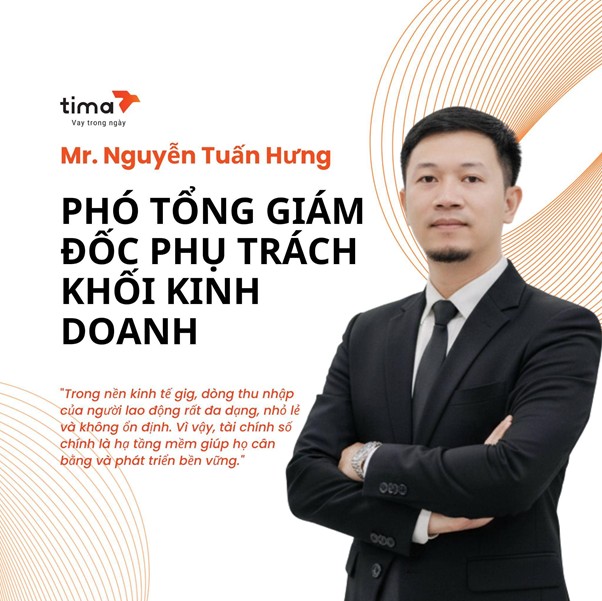Credit gap in new labor structure
The rapid development of the Gig economy (Gig Economy - Economic model based on freelance, short-term or project-based work) has caused the rate of freelancers, working by shift or by project to increase sharply in recent years. This is a group with a multi-source income, unstable and difficult to meet the strict criteria of traditional credit such as labor contracts, salary tables or a history of standardized income.
According to Mr. Nguyen Tuan Hung, Deputy General Director of TimA, it is the cash flow that has caused "many workers to be excluded from the credit system even though they still have the ability to generate income". In many digital financial institutions, including TimA, the proportion of customers in the non-traditional income group has increased steadily and their borrowing needs are mainly for reinvestment in work or maintaining daily activities.
This gap creates pressure for the market to find a new, more flexible assessment method, while ensuring risk control.

Digital finance is a "Soft infrastructure" strategy for exploiting behavioral data
To solve the above problem, digital financial platforms are shifting to the "soft infrastructure" model, the technology layer allows the collection and analysis of non-traditional data such as cash flow per day, work frequency, consumer behavior or small-scale transaction history. These are data that closely reflect the income generation capacity of freelance groups compared to hard documents.
TIMA is one of the businesses applying this model by combining behavioral data with real-time risk analysis technology, helping to shorten the appraisal process and expand access to capital. The income-generating approach allows the platform to "soften credit criteria" while still ensuring safety.
Therefore, reducing dependence on paperwork helps the system recognize customers more diversely and limits the situation of omitting groups of workers with legal income but without standard documents.
Sustainable development direction: Financial discipline and risk management
Along with expanding capital access, an important problem for digital financial businesses is risk management in the context of constantly fluctuating customer income flows. This requires a flexible credit scoring system, updated in real time and based on a machine learning model to promptly identify abnormalities.
TimA said that the company's strategy is to build an evaluation system based on the true financial behavior of borrowers instead of relying purely on traditional criteria. The fast learning fast adjustment model helps businesses adapt to the Gig market (a labor market where workers do short-term, flexible or freelance jobs instead of full-time work) but still ensures transparency and legal compliance.
Emphasizing the sustainability of the market, Mr. Hung shared that technology is only a tool, and it is the workers and the way they manage cash flow that determine credit quality.












